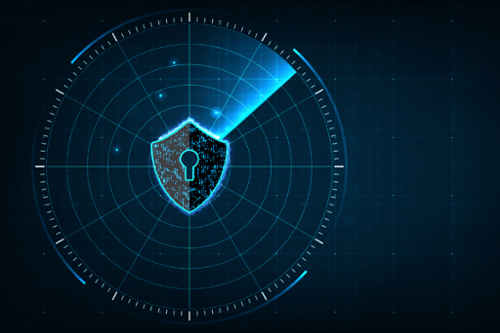3 min read
Cybersecurity Paradox: Too Many Solutions Makes You Less Secure
 Stefan Hansen
:
02. June 2023
Stefan Hansen
:
02. June 2023

Believing that more cybersecurity solutions increase safety is a common misconception. An overload of security measures can ironically generate more risk, leaving your security team grappling with a complexity that may obscure malicious activity. This issue often emerges from a knee-jerk reaction to the latest threats, leading to an unwieldy accumulation of alerts, consoles, and events that hamper a strategic, effective cyber defense posture.
The key problem stems from organizations not properly assessing whether new cybersecurity solutions align with their specific threat landscape. With countless vendors offering "all-in-one", "next-generation" solutions, many companies neglect the full potential of their existing cybersecurity arsenal.
This practice leads to an intricate maze of security solutions that, although seeming comprehensive on paper, can be inefficient and overly complicated to manage. The complexity can conceal outdated solutions, contributing to technical debt and making it difficult to accurately evaluate the coverage of these security measures. Moreover, such disjointed IT architecture may prevent organizations from leveraging advanced data analytics insights, while potentially widening their attack surface due to legacy or misconfigured systems.
Integration of multiple security solutions necessitates a high level of expertise – a skill set that is currently in short supply. Without the guidance of cybersecurity experts, businesses may equate quantity with quality and expose themselves to heightened vulnerability, while misdirecting resources towards poorly constructed defenses.
Turning to managed services partners, or selecting vendors that offer broad, well-conceived portfolios, can provide a strategic approach to mitigating risks, while minimizing the integration costs and risks associated with a multitude of different vendor solutions.
A recommended strategy is to rationalize and consolidate your security solutions to a select group of vendors. Many CISOs are moving away from an assortment of standalone solutions and focusing on vendor consolidation to improve their security posture and gain efficiency of scale. It's crucial to remember, though, that no single vendor excels across all security domains, so striking the right balance is essential to prevent security breaches.
The current cybersecurity climate calls for a proactive, best-practice approach, where fundamental security measures are firmly established. Building on this solid foundation with additional, risk-specific layers paves the way for a strategic, holistic approach to cybersecurity frameworks. This signifies a significant cultural shift towards more efficient and effective cybersecurity measures.
Quality over quantity
Here are a few pieces of advice to consider:
Re-evaluating existing tools: Often, organizations may already have powerful security tools at their disposal, but these may be underutilized or not fully understood. Regular audits of current cybersecurity infrastructure and tools can help organizations identify gaps and maximize the usage of their existing resources.
Streamlining security measures: While having a variety of security tools can cover multiple fronts, it can also introduce complexity and management challenges. A strategic approach involves consolidating to a select set of trusted vendors whose solutions are well-integrated and comprehensive, offering a streamlined, robust defense system.
Engaging cybersecurity experts: Given the complexity and evolving nature of cyber threats, having specialized cybersecurity personnel on board is crucial. These experts can provide accurate assessments, aid in understanding complex cybersecurity solutions, and offer guidance on tool integration and management.
Careful assessment of new solutions: Before adopting a new security solution, a thorough analysis should be performed. This involves evaluating the solution's fit for the organization's specific threat profile, its compatibility with existing systems, and its potential impact on operations.
Focus on fundamentals: A robust cybersecurity posture is built on the fundamentals. This includes robust firewalls, timely patching and updates, strong authentication measures, and data encryption. Once these are in place, more advanced security measures can be incorporated as needed.
Proactive approach: Instead of merely reacting to cyber threats, organizations should strive to anticipate potential risks. Utilizing data analytics and threat intelligence can provide valuable insights that can drive proactive defensive strategies and improvements.
Investment in security education: The human element remains a significant factor in cybersecurity. Regular training sessions can raise awareness among staff about the latest threats, promoting safe online practices and ensuring everyone knows their role in maintaining cybersecurity.
Indeed, quality over quantity is a guiding principle in cybersecurity. Having a multitude of security measures may not be effective if they're not properly integrated, managed, or understood. Efficiency, synergy, and a strategic, well-rounded approach are crucial in maintaining a robust cybersecurity stance.
As a leader in strong cryptographic technology, Cryptomathic provides businesses with best-in-class security solutions for mobile app protection, crypto-agility, key management and qualified electronic signing. Contact us for more information or to discuss your requirements.